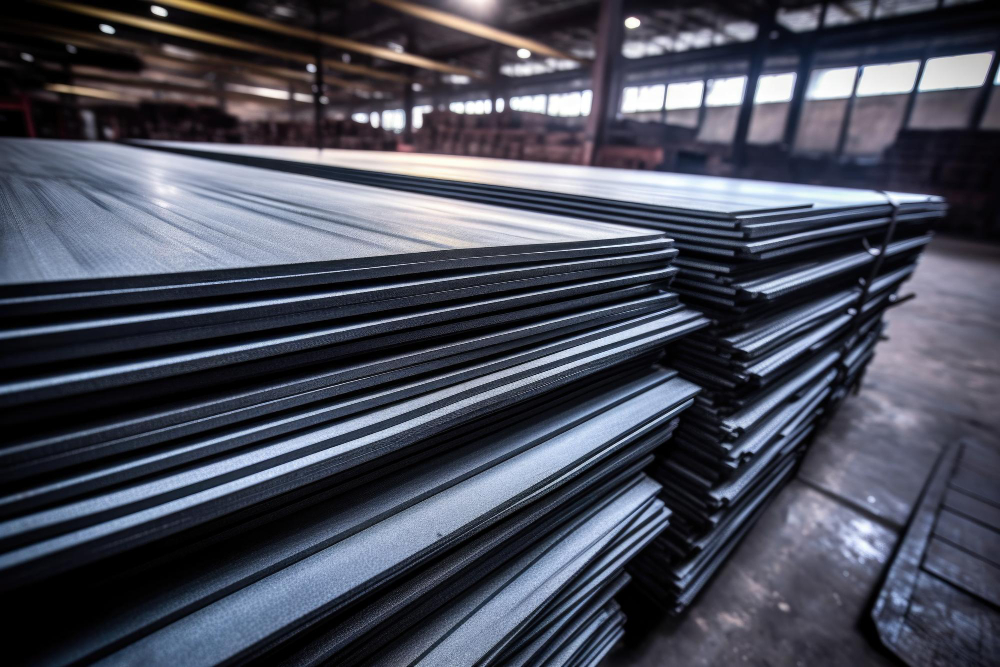The conversation around sustainability and environmental responsibility is louder than ever in today’s world. This discussion extends into every corner of our lives, including the construction and engineering sectors. Here, a revolution is quietly taking place, focusing on materials that not only stand the test of time but also contribute to a healthier planet. Amidst this transformative era, specific construction materials are making waves for their versatility and sustainability. It’s a product known for its strength and durability, playing a crucial role in infrastructure projects across the globe. As we delve into the realm of sustainable construction, let’s shine a spotlight on the innovative reuse of steel sheet piling.
A Primer On Steel Sheet Piling
Steel sheet piling is a powerhouse in the construction world, widely recognized for its pivotal role in erecting robust retaining walls. You’ll find them in an array of settings, from quay walls to underground car parks. These piles are driven into the ground and interlocked to form an impervious barrier, effectively managing water and soil. The most commonly encountered shapes are U- and Z-piles, offering a blend of functionality and efficiency with their standard widths of 600 to 800 mm.

The integrity of these structures is notable, designed to withstand the elements for 50 to 100 years, thanks to various methods that counteract corrosion. Among these, the use of “sacrificial steel,” corrosion-resistant coatings, and cathodic protection stand out. For those projects demanding ultimate water tightness, like barrier walls for contaminated sites, solutions range from sealants to welding, ensuring not a drop gets through. This level of durability and efficiency marks steel sheet piling as an essential component in modern construction, ready to meet the challenges of today and tomorrow.
Steel Sheet Piling And The Circular Economy
The circular economy model champions a shift from the traditional linear approach of use and disposal toward a more sustainable cycle of reducing, reusing and recycling. In this model, steel sheet piling emerges as a stellar example of sustainability in action. Its design minimizes resource use, and its life cycle embodies the principles of reuse and recycling. Remarkably, these piles can serve multiple projects again and again, showcasing their incredible capacity to reduce environmental impact with each reuse cycle. The potential for 100% recyclability of steel further emphasizes its place within a sustainable framework, highlighting steel sheet piling as a key player in advancing circular economy goals within the construction sector.
The Path To Reusing Steel Sheet Piling
The modular design of steel sheet piling simplifies the reuse process significantly. Permanent installations usually go towards recycling, but temporary applications provide chances to repurpose these piles multiple times, thus extending their life and reducing environmental footprints. Operators use vibratory hammers to extract and then reuse these sections, especially the rigid U-shaped profiles. This process highlights both the versatility of steel sheet piling and its role in promoting sustainable construction practices.
Impact On Global Warming Potential
The construction sector is a significant contributor to global greenhouse gas emissions, with steel production alone accounting for a notable percentage. However, the reuse of steel sheet piling presents a compelling opportunity to mitigate these impacts. By repurposing steel sections, the demand for new materials diminishes, along with the energy consumption and carbon emissions associated with their production. Environmental Product Declarations (EPDs) offer transparent insights into the environmental footprints of these materials, illustrating the reduced global warming potential achieved through reuse. This cycle not only contributes to lower emissions but also aligns with broader efforts to curb the sector’s environmental impact.
A New Beginning For Steel Sheet Piles
At the end of its lifecycle, steel sheet piling holds a promise for sustainability that extends beyond mere reuse. The assumptions surrounding their end-of-life scenario reveal a commitment to a sustainable future, with a significant percentage being reused or recycled. This approach not only diverts waste from landfills but also reinforces the role of steel sheet piling in promoting a more environmentally conscious construction industry. Through innovative reuse and recycling practices, these materials embark on a continuous journey, contributing to the integrity of structures while championing the principles of environmental stewardship.
In conclusion, the conversation around the reuse of steel sheet piling touches on more than just the technical merits of a construction material. It speaks to a larger narrative of sustainability, innovation, and environmental responsibility. As we continue to build the world around us, the principles of the circular economy remind us of the importance of materials that offer both durability and a path toward a greener future. Steel sheet piling stands as a testament to this ethos, embodying the resilience and adaptability necessary to meet the challenges of today and tomorrow.
Committed To Sustainability And Innovation
At Bigfoot Pipe And Piling, we delve into the topic of steel sheet piling reuse, focusing on more than just its impressive technical specs. For us, it’s about contributing to a broader narrative that emphasizes sustainability, innovation, and our shared environmental duties. As we advance, crafting the infrastructure of our world, the circular economy’s principles steer us. This strategy highlights the importance of choosing materials for their durability, strength, and positive impact on the planet’s health. Our commitment to steel sheet piling showcases our dedication to resilience and adaptability, positioning us to tackle both present and future industry challenges confidently.
